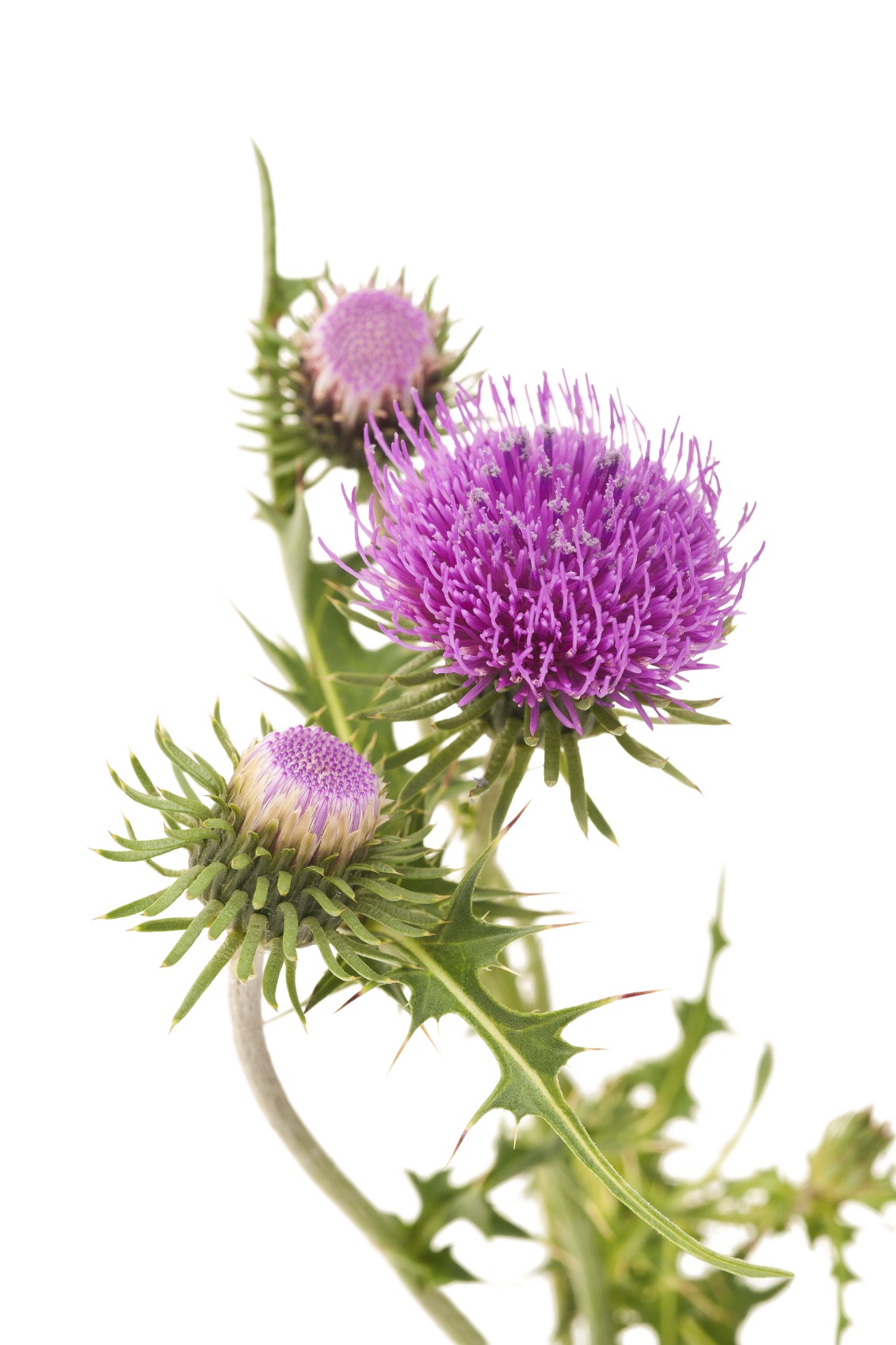
From Herbalist Erin Smith
Milk Thistle has a rich history and was revered by Pliny and Dioscorides for its medicinal properties. It has continued to be used extensively as one of the best herbs to support healthy liver function. Like another famous liver tonic, dandelion (Taraxacum officinale), it is a gentle but powerful herb. Traditionally, Milk Thistle was used to ease all types of liver inflammation. Like dandelion it also gently stimulates the liver, supporting healthy digestion and encouraging absorption of nutrients. But unlike dandelion it has the amazing ability to heal and protect the liver.
Milk Thistle is a well-researched herb and this research has investigated milk thistle’s use to protect the liver from toxins, including poison. It is most well known for helping with amanita mushroom (Amanita muscaria) poisoning, saving lives by preventing the liver from absorbing amanita’s toxic constituents. It has also been found to help protect the liver from the damaging effects of some types of chemotherapy. It is a deeply supportive herb, supporting the liver so it can heal and regenerate itself. As a tonic, it can be taken daily and is beneficial for those wanting a gentle liver tonic to encourage healthy liver function or as a supportive adjunct herb for hepatitis C, cirrhosis and other liver diseases.
Milk thistle also supports healthy cholesterol and blood sugar levels.
Traditionally, the young stalks and seeds were used but today the seeds are most commonly used. It is gentle and safe to use long term.
While Milk Thistle is most commonly used in tincture and capsule form, one of my favorite ways to use milk thistle is also in the kitchen. The seeds grind easily in a coffee grinder and have a nutty slightly bitter flavor. Here is one of my favorite recipes:
Gomasio is a traditional Japanese condiment that is made with roasted sesame seeds, seaweed, and either sugar or salt.
- 1 cup unhulled sesame seeds, toasted
- 2-3 teaspoons sea salt (or to taste)
- 1 tablespoon powdered kelp or other preferred seaweed (or to taste)
- ¼ cup powdered ground milk thistle
The above is just a starting point. Feel free to play around with the ratios until you find what is best for your taste. The seaweed can be eliminated as well or substituted with ground, dried nettles.
To make:
Toast the sesame seeds, placing them in a skillet on medium heat. Toss or stir continuously until they become fragrant and you hear a few of them popping. They will also appear slightly darker. They can burn quickly so watch closely. Once they are toasted remove from heat and pour into a bowl to cool. Grind the milk thistle seeds in a coffee grinder until powdered and place in a clean bowl. Mix with the salt and powdered seaweed (if you can not find powdered, you can do this on your own in the coffee grinder). Grind the sesame seeds. This usually only takes a few pulses. Don’t overdo or you’ll get tahini! Place the ground sesame in the bowl with the other ingredients and stir until well combined. Store in a mason jar or other airtight container. If you think you will take longer than a month or so to use the mixture, store in the refrigerator.
Sprinkle on stir-fry, brown rice, popcorn, salads, and more!
A version of this article originally appeared at integrativebotanical.com and is used with permission


